What is BMS?
BMS, Battery Management System, is a mandatory component for LiFePO4 batteries.
LiFePO4 or all lithium battery cells are sensitive to over-voltage, under-voltage, and over-current. If a LiFePO4 battery is kept under one of the above conditions for a long time, it can easily cause capacity degradation, battery damage, or even the risk of fire.
Therefore, the primary task of the BMS is to protect the LiFePO4 battery cells. Then, they can be working at the appropriate voltage, current, and temperature.
In addition to this, it would be nice if other required functions could be achieved.
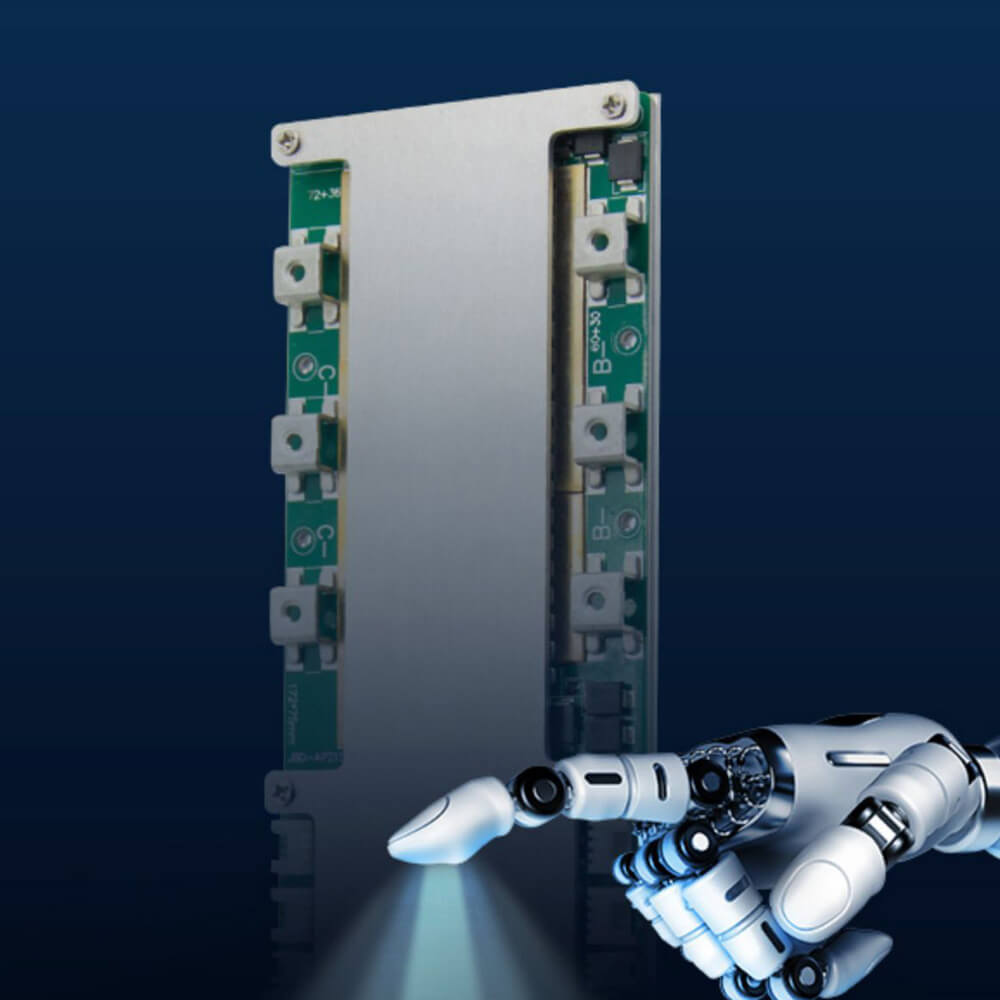
Basic Function and Working Principle of BMS
The primary task of BMS is to protect the battery cells, which is also the most basic function. A BMS with only this basic function is also called PCB, Protection Circuit Board.
Below are some detailed protection parameters.
Over-Voltage Protection
Cell Over-Voltage Protection
Cell over-voltage 3.65V, release voltage 3.55V, delay time 2S.
While charging, the voltage of each cell is increasing.
When one of the cells reaches the voltage limit, 3.65V, the cell over-voltage protection is triggered and the charge circuit is disconnected.
After the charge circuit is disconnected, the voltage drops naturally to 3.55V, or discharge, delayed by 2S, then the charge circuit is restored.
If it can be set, I personally recommend setting the overvoltage protection threshold to 3.60V, so that the battery does not reach 100% full. Because 100% SOC is not in the most stable status due to the lithium ions accumulating on the positive terminal.
Pack Over-Voltage Protection
The following is for a 12.8V Battery Pack, 4 cells in series.
Pack over-voltage limit, 14.60V. Release voltage 14.20V, 2S delay.
Similar to cell overvoltage, the total voltage hits 14.60V and the charge circuit is disconnected. The voltage drops naturally, or discharge the battery, to 14.20V, then the charge circuit is restored after a 2S delay.
Hardware Over-Voltage Protection
3.9V, 2S delay. Hardware protection is the last line of defense of the battery pack.
Under-Voltage Protection
Cell Under-Voltage Protection
Single-cell under-voltage limit 2.5V, release voltage 2.7V, 2S delay.
While discharging, the cell voltages are dropping continuously. When one of the cells reaches 2.50V, the discharge circuit will be cut off.
After charging, or voltage naturally rising, the cell voltage returns to over 2.7V, then the discharge circuit will recover after 2S.
Pack Under-Voltage Protection
Pack under-voltage limit 10V, release voltage 10.80V, delay 2S.
Same procedures as above.
Hardware Under-Voltage Protection
2.0V, 16S
Over Current Protection
Software(1st grade) Current Protection
Charge over current, 0.5C (50A if 12.8V100Ah LiFePO4 Battery), release time 30S, charge overcurrent delay 10S.
If the charging current exceeds 50A, the charge circuit will be shut down.
Discharge over current, 1C (100A if 12.8V100Ah LiFePO4 Battery), release time 30S, discharge overcurrent delay 10S.
Hardware(2nd grade) Current Protection
200A (It will be different for each battery model, each BMS), protection delay 160mS.
Short-Circuit(3rd grade) Protection
1000A, 40 µs.
In general, there is also a max withstand current of all the BMS electronics components. If it exceeds 2600A, most of the BMS will break down.
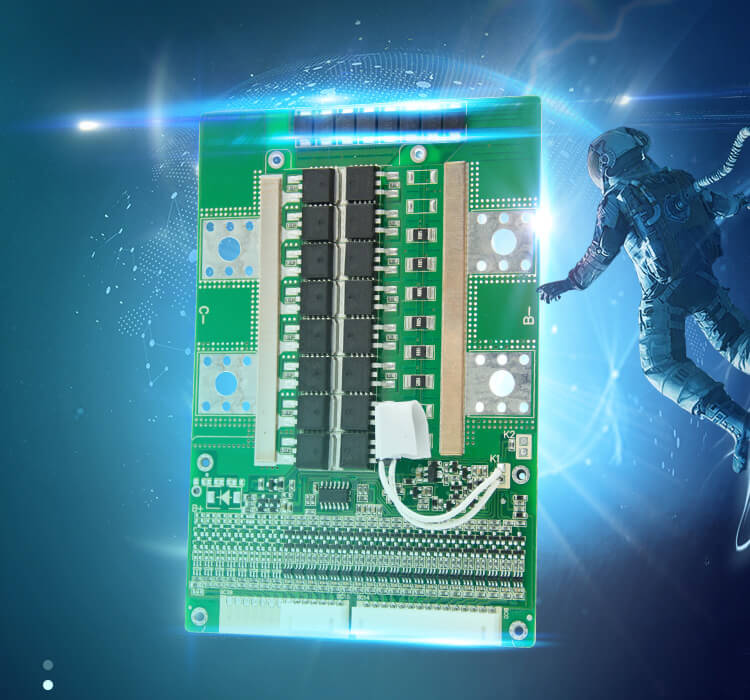
Main Components of BMS
MCU – The Human Brain
MCU collects various data and sends commands.
For example, voltage, current, temperature, etc. And send a command to the corresponding MOSFET to open or close the circuit.
MOSFET
Control the turn-on or turn-off of the circuit.
Withstand voltage and current are important parameters.
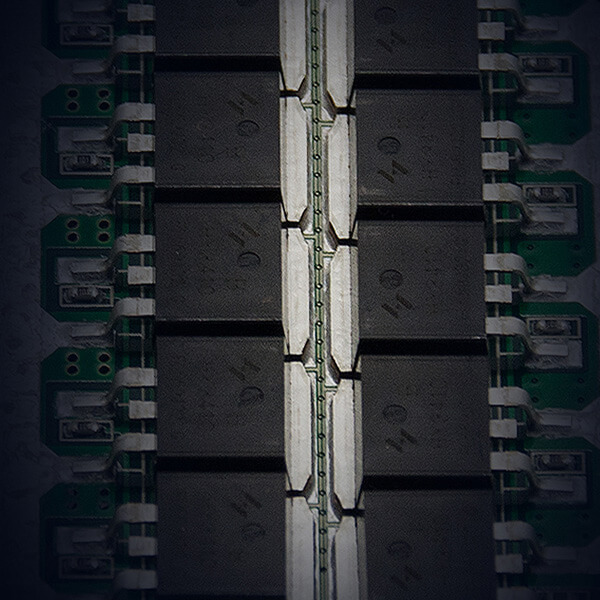
Current Sensor
A current sensor is to get current readings.
There are various other small resistors, semiconductors, etc.
Temperature Protection
The required component is a temperature sensor- NTC.
The temperature sensor detects the temperature value and transmits it to the MCU to turn on or off the corresponding MOSFET.
Charge high-temperature protection
75°C. Release 55°C, delay 2S.
Charge low-temperature protection
0℃, Release 5℃, Delay 2S
Discharge high-temperature protection
75°C, Release 55°C, Delay 2S.
Discharge low-temperature protection
-10°C, release °C, delay 2S.
Smart BMS-Cell Balancing
The main purpose of cell balancing is to keep each cell in the same similar condition for a long time, so as to prolong the lifespan of the battery pack.
Cell balancing is classified into active balancing and passive balancing.
The circuit of active balancing is more complicated. The components are still large, as there are no integration chips. The advantage is that it does not heat up, and the balancing current can reach 10A current.
Passive balancing is mainly using a heating resistor to consume the energy of the high-voltage cell. The disadvantage is that it will generate heat, and the balancing current is very small only a few hundred mA.
However, passive balancing requires very little space. Till now, most of the balancing module integrated into BMS is passive balancing.
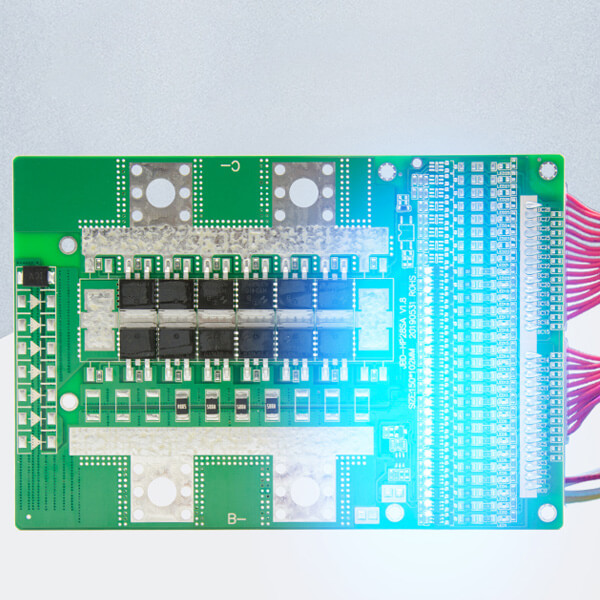
Communication Module
The communication module is to enable the BMS to communicate with the external world, transmit data, and change the internal parameters of the battery through external software or apps.
The popular communication module ports are, RS232, RS485, CAN, UART, etc.
Through these ports, the battery can communicate directly with the inverter and the data obtained from the battery can be fed directly to the inverter or to the whole smart system.
Or you can read the battery data, modify parameters, and others via the USB port of your computer.
Bluetooth Module
The Bluetooth function is actually based on the communication module. The Bluetooth module is connected to the port of the communication module, UART or RS232, to achieve the purpose of Bluetooth communication.
A powerful Bluetooth App can not only review SOC, Remaining Energy, Voltage, Current, individual cell voltages, and more. But also you can modify the BMS protection parameters as you want, to make the battery a unique one for yours.

Electronic Switch
Electronic switch can control the on/off of the discharge circuit.
Self-heating module
When the ambient temperature drops below 0°C and the charge current comes, the self-heating module can heat up the internal of the battery.
When the battery temperature reaches above 5°C, the charge current can continue to charge the battery.
In this condition, the battery is actually charged at a temperature of 5°C.
GPS module
The built-in GPS module can be used to locate the battery using the satellite positioning system, so that all battery locations and their woking status can be managed in a network.
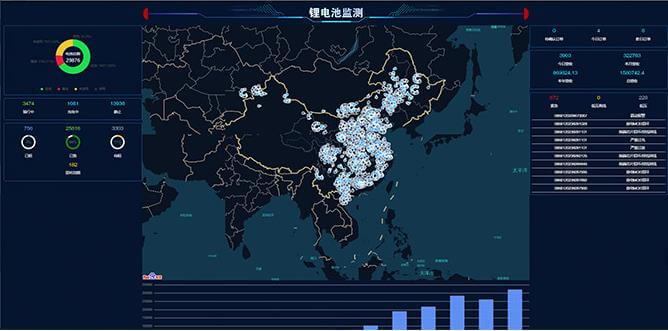
Conclusion
A good BMS is, to do the protection job well, and have the necessary function that you want!
Repeat it again, below are the required protections:
- Charge Protections
- Discharge Protections
- Over-Voltage Protections
- Under-Voltage Protections
- Over-Current Protections
- Short-Circuit Protections
- High-Temperature Protections
- Low-Temperature Protections.
Thanks for reading!




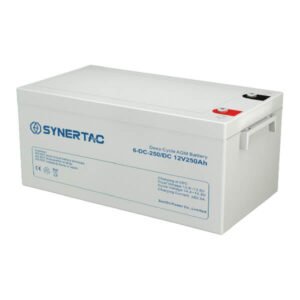


13 Responses
Greatly informative and very well written blogposts Andy – thanks!
Thanks, Terry.
Great blog. Helped me a lot to understand about LFP batteries.
What is S in this blog ? I have seen some S like delay 2S. Is that S means seconds ?
Oh, yes, delay 2s means 2 seconds’ delay.
As far as I know, in the battery-related information, “S” always means “seconds”.
Thanks, Riswan.
Andy
Hi Andy…My name is Eugene (Dusty) Ricketts and I live in Cape Town in South Africa. I have a Club Car golf buggy that uses 6 x 8Volt Deep Cycle Trojan Batteries. I want to switch to LifeP04 Lithium-Ion batteries.
Can you please recommend to me what are the ideal replacement batteries to use/purchase (For Example will your – LFP48V100Ah | Modular Lithium Battery be the ideal suitable replacement battery?).
In addition, please advise/confirm which LifePo4 battery charger I would have to purchase.
Finally, could you also advise me if you are supplying (exporting) batteries into South Africa (Cape Town area specifically) and provide me with the company contact details.
I appreciate any assistance or advice you can give me.
Kind Regards
Dusty.
Hi Eugene,
The battery model LFP48V100Ah Modular is not fit for your golf cart.
It is better to find a battery designed for golf cart and make sure the battery’s max power is over your golf cart’s max power.
We don’t have any partners in South Africa yet. Thank you!
Andy
Hi Andy,
Nice information. Thank you. I have a problem with my 2s lifepo4 bms. Charging is good and balanced. But discharge is bad. One 32650 has after discharge 3.19v the other one 2.7v. Bms stop discharge what is good to protect. Why is the discharge not balanced? I tried 2 different bms. Both bms have the same problem. Do you have any suggestions? Regarding Martin
Hi Martin,
There are 2 battery cells in series?
2 cells in series, the discharge will be the same for the 2 battery cells.
One cell first reaches the low-end protection because it has a lower actual capacity.
You may use 2 battery cells with closer capacity.
Andy
Hi does the lifepro batteries come with an in built BMS or would need to be purchased separately
Hi Rob,
The LiFePO4 battery pack is alway with a built-in BMS, but not the LiFePO4 battery cell.
Andy
Hi Andy, Nice articles, Great information.
I’m looking to import about 30Kw of 48 Volt LIFEPO4 batteries into Australia for solar off-grid.
As you would be aware the shipping of batteries falls into dangerous goods shipping and attracts a premium.
Is it possible to ship uncharged batteries and charge them for the first time at the point of installation and hence get around the dangerous goods shipping?
Hey Jeff,
Great to see you here!
You are right about the sea shipping for Lithium batteries, they are dangerous goods (DG).
The batteries will be kept at 50% SOC while sea shipping, uncharged will damage the batteries.
Andy